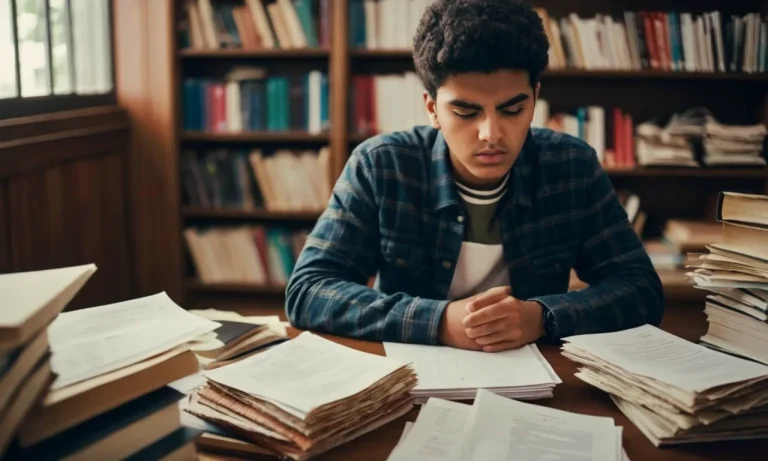Imagine waking up before the crack of dawn, donning your school uniform, and embarking on a journey to an institution where education takes precedence. This is the reality for millions of Korean students, whose daily routines are meticulously structured around their academic pursuits.
If you’re short on time, here’s a quick answer to your question: Korean students typically start their school day around 8 AM and finish around 4 PM, with variations depending on the school level and region.
However, their educational journey often extends beyond the traditional school hours, with many students attending after-school academies or engaging in self-study until late at night.
In this comprehensive article, we will delve into the intricate details of the Korean education system, exploring the factors that shape the school schedules, the cultural significance of education, and the impact it has on students’ lives.
We will also examine the variations in school timings across different regions and levels, providing a holistic understanding of this unique educational landscape.
The Korean Education System: An Overview
Education holds a revered place in Korean culture, viewed as the key to success and social mobility. This deep-rooted belief stems from the Confucian values that have shaped Korean society for centuries.
Koreans place immense emphasis on academic achievement, seeing it as a path to personal growth, social status, and a better future.
The Importance of Education in Korean Culture
In Korea, education is not just a means to acquire knowledge but a way of life. From a young age, Korean children are instilled with the importance of diligence and perseverance in their studies. Parents and society alike celebrate academic excellence, with top students revered as role models.
This cultural reverence for education has contributed to Korea’s impressive PISA scores (Programme for International Student Assessment), consistently ranking among the top nations globally.
School Levels and Curriculum
The Korean education system comprises several levels: elementary school (grades 1-6), middle school (grades 7-9), and high school (grades 10-12). The curriculum is standardized nationwide and emphasizes core subjects such as Korean language, mathematics, science, and social studies.
Additionally, students receive instruction in English, arts, and physical education. The rigorous curriculum and high expectations contribute to the academic pressure felt by Korean students.
Entrance Exams and Academic Pressure
- Korean students face intense competition to gain admission to prestigious universities, which is often seen as a gateway to successful careers and societal status.
- The university entrance exam, known as the Suneung (College Scholastic Ability Test), is a pivotal event that can determine a student’s future path.
- To prepare for this high-stakes exam, many students attend after-school academies (known as “hagwons”) and engage in extensive tutoring. This extra workload, combined with the already demanding school curriculum, can lead to significant academic pressure and stress.
While the Korean education system is highly regarded for its academic rigor and achievements, concerns have been raised about the intense pressure and potential negative impacts on students’ well-being.
Efforts are underway to strike a balance between academic excellence and a more holistic approach to education, promoting overall student development and mental health.
School Timings in Korea: A Closer Look
In Korea, the school day schedule varies based on the educational level. While there are some regional differences, most schools across the country generally follow a similar pattern. Let’s dive into the typical timings for each level:
Elementary School Schedules
Elementary schools in Korea usually start their day around 8:00 AM and end around 1:00 PM or 2:00 PM, depending on the grade level. Younger students tend to have shorter days, while older ones may stay until later in the afternoon.
According to The Korea Times, the average elementary school day lasts approximately 5-6 hours.
Middle School Schedules
Middle school students in Korea typically begin their day around 8:30 AM and finish between 3:00 PM and 4:00 PM. Their schedules are a bit longer than elementary school, with classes lasting until mid-afternoon.
Many middle schools also offer after-school programs or extracurricular activities, which can extend the day further. According to OECD data, Korean middle school students spend an average of 7.5 hours per day on schoolwork, including both in-school and out-of-school study time.
High School Schedules
High school students in Korea often have the longest school days, starting as early as 7:30 AM and finishing around 5:00 PM or later. Their schedules are packed with core academic classes, as well as electives and extracurricular activities.
Many high schools also offer self-study periods or after-school programs to prepare students for the highly competitive College Scholastic Ability Test (CSAT). According to The Korea Herald, high school students spend an average of 9.5 hours per day on schoolwork, including both in-school and out-of-school study time.
Regional Variations
While the general schedules outlined above are common across Korea, there can be some regional variations. For example, schools in rural areas may start and end their days a bit earlier or later than those in urban centers, due to factors like transportation and commute times.
Additionally, some schools may offer extended day programs or weekend classes to accommodate the high demand for supplemental education. It’s always a good idea to check with your local school district or education office for the most up-to-date and accurate information on school timings in your area.
Beyond the Classroom: After-School Activities
The rigorous academic schedule in South Korea doesn’t end when the final bell rings. Many students engage in various after-school activities to supplement their education and prepare for the highly competitive college entrance exams.
These activities range from private tutoring to extracurricular pursuits, reflecting the dedication and determination of Korean students to excel academically.
Private Academies (Hagwons)
Private academies, known as hagwons, are a prevalent part of the Korean education system. According to a report by the Korea Times, over 70% of Korean students attend hagwons after regular school hours.
These private institutions offer supplementary classes in subjects like math, science, and English, as well as test preparation courses. Many students attend multiple hagwons, often late into the evening, to gain a competitive edge.
The hagwon industry is a multi-billion-dollar business, reflecting the immense importance placed on education in Korean society.
Self-Study and Tutoring
In addition to hagwons, many Korean students engage in self-study or seek individual tutoring. Self-study is a common practice, with students dedicating hours outside of school to review materials, complete assignments, and prepare for exams.
Tutoring services, both in-person and online, are also widely utilized. According to a report by Statista, the average expenditure on private education per student in South Korea was around 3.2 million won (approximately $2,500) in 2021.
These figures highlight the significant investment Korean families make in their children’s education.
Extracurricular Activities
While academic pursuits are the primary focus, Korean students also participate in various extracurricular activities. These activities range from sports teams and music clubs to volunteer work and student organizations.
Extracurricular involvement is often seen as a way to develop well-rounded personalities and enhance college applications. However, the intensity of academic demands means that many students have to carefully balance their time between studies and extracurricular pursuits.
Can you imagine juggling school, hagwons, self-study, and extracurricular activities all at once? 😮 It’s a testament to the incredible dedication and resilience of Korean students!
As you can see, the lives of Korean students extend far beyond the classroom walls. The commitment to academic excellence and the pursuit of a well-rounded education through after-school activities is truly remarkable.
While the workload may seem daunting, these experiences undoubtedly shape the character and determination of Korean students, preparing them for future challenges and success. 👏
The Impact of Long School Hours on Students
Mental Health and Stress Management
The grueling schedules that Korean students face can take a significant toll on their mental well-being. According to a study by the Korean Educational Development Institute, over 60% of high school students reported experiencing high levels of stress and anxiety.
This constant pressure to excel can lead to burnout, depression, and even suicidal thoughts. It’s crucial for students to learn effective stress management techniques and have access to mental health resources.
Organizations like Mind Cafe provide counseling and support for those struggling with mental health issues.
Work-Life Balance
With the long hours spent at school and even longer hours dedicated to studying at home, Korean students often struggle to maintain a healthy work-life balance. This imbalance can lead to social isolation, lack of physical activity, and a lack of time for hobbies and personal development.
It’s essential for students to find ways to incorporate leisure activities and self-care into their routines. According to a survey by the Korean Youth Counseling Institute, over 70% of students reported feeling dissatisfied with their quality of life due to the intense academic demands.
Societal Expectations and Pressure
In South Korea, academic success is deeply ingrained in the societal fabric, and the pressure to excel can be overwhelming. Parents, teachers, and even peers contribute to this intense pressure, often equating a student’s worth with their academic performance.
This can lead to feelings of inadequacy, low self-esteem, and a constant fear of failure. It’s crucial for society to recognize the importance of a well-rounded education and to value students for their unique talents and abilities, rather than solely focusing on test scores and rankings.
Organizations like UNICEF Korea are working to promote a more balanced and child-friendly educational system.
Despite the challenges, there are signs of positive change on the horizon. The Korean government has implemented initiatives to reduce the academic burden on students, such as shortening school hours and promoting extracurricular activities.
Additionally, there is a growing awareness of the importance of mental health and work-life balance, with more resources and support systems being made available to students. By addressing these issues head-on, Korea can work towards creating a more balanced and nurturing educational environment for its students.
Conclusion
The Korean education system is a complex tapestry woven with cultural values, academic rigor, and societal expectations. While the school timings may seem daunting, they reflect the nation’s unwavering commitment to nurturing the next generation of leaders, innovators, and scholars.
As we delve deeper into the intricacies of this educational landscape, it becomes evident that the journey of a Korean student is not merely a pursuit of knowledge but a testament to resilience, dedication, and the relentless pursuit of excellence.
Whether it’s the early morning commute or the late-night study sessions, each moment is a stepping stone towards a brighter future, where the seeds of knowledge blossom into a lifetime of achievements.
Ultimately, understanding the school timings in Korea is not just about numbers on a clock; it’s about appreciating the cultural fabric that shapes the lives of millions of students, each striving to leave an indelible mark on the world through their academic endeavors.






